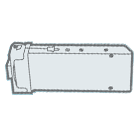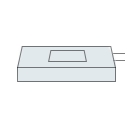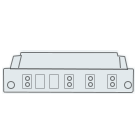Fiber Optic Tech
Key Performance Metrics of Optical Switches and Their Impact on Fiber Sensing Systems
In fiber-optic sensing systems, the performance of an optical switch directly determines the system’s monitoring accuracy, long-term stability, and operational reliability. As sensing technology evolves toward longer distances, higher channel density, and faster response speed, the importance of optical switch performance continues to grow. Key performance indicators include insertion loss, isolation, return loss, switching speed, crosstalk, and power consumption. These parameters not only reflect the quality of the switch itself but also influence the sensitivity, dynamic response capability, and overall lifespan of the sensing system.
Insertion Loss
Insertion loss is one of the core performance metrics of an optical switch, representing the attenuation of optical power after the signal passes through the device. It is typically expressed in decibels (dB). For fiber-optic sensing systems, lower insertion loss leads to lower signal attenuation and higher signal-to-noise ratio (SNR), resulting in improved sensing sensitivity.
In high-performance sensing applications, insertion loss should ideally be below 1 dB. However, due to different design principles, the insertion loss varies among switch types:
● Mechanical Optical Switches
Mechanical switches the optical path through physical movement of fiber ends or optical components. They usually achieve very low insertion loss, typically between 0.7–1.5 dB, making them ideal for long-distance sensing systems where signal attenuation is critical.
● Non-mechanical Optical Switches
Technologies such as electro-optic, thermo-optic, and MEMS switches rely on refractive index modulation to steer the optical path. Their insertion loss is generally slightly higher (1–2 dB). With continuous advancements in integrated photonics, this gap is narrowing quickly.
● Impact on Sensing Systems
In distributed fiber sensing systems—such as Distributed Temperature Sensing (DTS) or Distributed Acoustic Sensing (DAS)—fiber lengths can reach tens or even hundreds of kilometers. Excessive insertion loss may significantly weaken backscattered signals, making effective detection impossible.
In multi-node architectures, every additional optical switch contributes extra loss. Thus, choosing low-insertion-loss switches is essential to maintaining long-range monitoring capability and accurate signal recovery.
In distributed sensing systems, assuming a laser source output of +17 dBm and a backscattered signal (Raman or Rayleigh) at 100 km attenuated to approximately –70 dBm, the total link budget is roughly 87 dB. Every additional 0.5 dB of insertion loss effectively shortens the achievable sensing distance by 5–8 km (depending on fiber attenuation coefficient).
Real-world example:
A 100 km Raman Distributed Temperature Sensing (DTS) system achieved 103 km reach without a switch. After inserting a 1×64 mechanical switch (single-pass IL = 0.8 dB), the round-trip loss of 1.6 dB reduced the effective range to 94 km. Replacing it with a thermo-optic switch (IL = 2.5 dB) further dropped the range below 80 km, causing temperature resolution at the far end to degrade beyond 5 °C—failing engineering requirements. Thus, in ultra-long-haul (>50 km) or ultra-high-channel-count (>32 channels) systems, insertion loss has become the second-largest loss contributor after fiber attenuation itself. Priority must be given to mechanical or high-end MEMS switches with IL < 0.5 dB.
Isolation and Return Loss
Isolation and return loss are crucial to suppressing unwanted reflections and maintaining the purity of sensing signals.
● Isolation
Isolation indicates how well an optical switch blocks light in the OFF state. High isolation (typically >45–50 dB) prevents optical leakage into unintended channels, ensuring:
High channel independence
Reduced crosstalk and false triggering
Stable long-term monitoring performance
In high-precision DAS systems—used in perimeter security or pipeline leak detection—high isolation is particularly important, as the system must detect extremely weak acoustic disturbances.
● Return Loss
Return loss measures the amount of reflected optical power returning to the input. A high return loss (>35 dB) indicates low reflection. High return loss helps:
Protect laser sources from back-reflection damage
Reduce noise from multi-reflection events
Maintain phase stability in coherent detection systems
For instance, in OFDR-based sensing, excessive reflections can distort interference fringes, affecting measurement accuracy. Optical switches with high return loss mitigate these effects.
● Importance in Real Applications
In electric power cable temperature monitoring systems, reflections from connectors or splicing points may cause false peaks or fluctuations in the sensing curve. High-isolation and high-return-loss switches ensure that reflected light neither damages the source nor contributes to measurement noise.
Switching Speed
Switching speed refers to the time required for the optical switch to respond to a control signal and stabilize the optical path. Depending on the technology used, switching time ranges from milliseconds to nanoseconds.
● Speed Requirements in Sensing Systems
DTS systems typically require only millisecond-level switching (1–10 ms) for periodic multi-channel polling.
High-frequency DAS and vibration monitoring may demand microsecond or nanosecond switching for capturing transient events.
Structural health monitoring (SHM) prioritizes stability, so moderate-speed mechanical switches are often used.
| Type | Switching Time | Typical Applications |
|---|---|---|
| Mechanical | 3–30 ms | DTS, quasi-static FBG demodulation |
| MEMS | 50 µs–5 ms | Medium-to-high-speed multi-channel Φ-OTDR |
| Thermo-optic | 1–10 ms | Cost-sensitive static monitoring |
| Electro-optic (LiNbO₃) | <10 ns | High-speed triggering, transient analysis |
| Magneto-optic | 50–300 µs | Polarization-maintaining, high-isolation |
| Acousto-optic | <1 µs | Ultra-fast frequency selection |
Faster switching enables higher monitoring frequency and better real-time response, which is essential for applications such as seismic detection, high-speed railway monitoring, or structural event tracking.
Crosstalk and Power Consumption
● Crosstalk
Crosstalk refers to unintended signal leakage between channels. Low crosstalk (typically < –60 dB) is crucial in:
Multi-channel DAS systems
Large-scale distributed sensor networks
High-precision localization systems (e.g., multi-zone oil well monitoring)
Excessive crosstalk may cause channel interference, reduce measurement accuracy, and impair event localization.
● Power Consumption
Optical switch power consumption varies with the underlying technology:
| Switch Type | Power Consumption | Notes |
|---|---|---|
| Mechanical | Near zero (latching type) | Ideal for long-term unmanned operation |
| Thermo-optic | High | Requires continuous heating, most power-hungry |
| MEMS | Low | Power used mainly during actuation |
| Electro-optic | Medium | Stable consumption, supports high-speed tasks |
In remote or outdoor sensing—such as pipeline monitoring, oil fields, or subsea observation—low power consumption reduces operational costs and extends battery life, boosting system reliability.
For example, in long-term pipeline monitoring systems, low-power switches ensure multi-year autonomous operation without frequent maintenance.
Selection Guidelines for Different Fiber-Optic Sensing Applications
| Sensing System | Priority Order (High → Low) | Recommended Switch Type |
|---|---|---|
| Ultra-long DTS (>80 km) | IL > RL > Reliability > Power | Ultra-low-loss mechanical |
| High-precision Φ-OTDR/DAS | Isolation/Crosstalk > RL > Speed > Repeatability | High-isolation mechanical or premium MEMS |
| High-speed dynamic events | Speed > Crosstalk > IL | Electro-optic/MEMS/Magneto-optic |
| Unattended field deployment | Power > Reliability > IL > Environmental ruggedness | Low-power mechanical |
| Large-scale FBG quasi-distributed | Repeatability > PDL > IL > Channel scalability | High-repeatability mechanical or uniform MEMS |
| Laboratory/transient spectroscopy | Speed > Bandwidth > Polarization maintenance | Electro-optic/Acousto-optic |
As a critical component in fiber-optic sensing systems, the performance of an optical switch directly influences the system’s accuracy, stability, and long-term reliability. By uating key parameters such as insertion loss, isolation, return loss, switching speed, crosstalk, and power consumption, engineers can suitable switch technologies that meet the needs of various sensing scenarios. Optimizing these parameters is essential to building high-performance, highly reliable fiber-optic sensing networks capable of operating in complex and demanding environments.



















